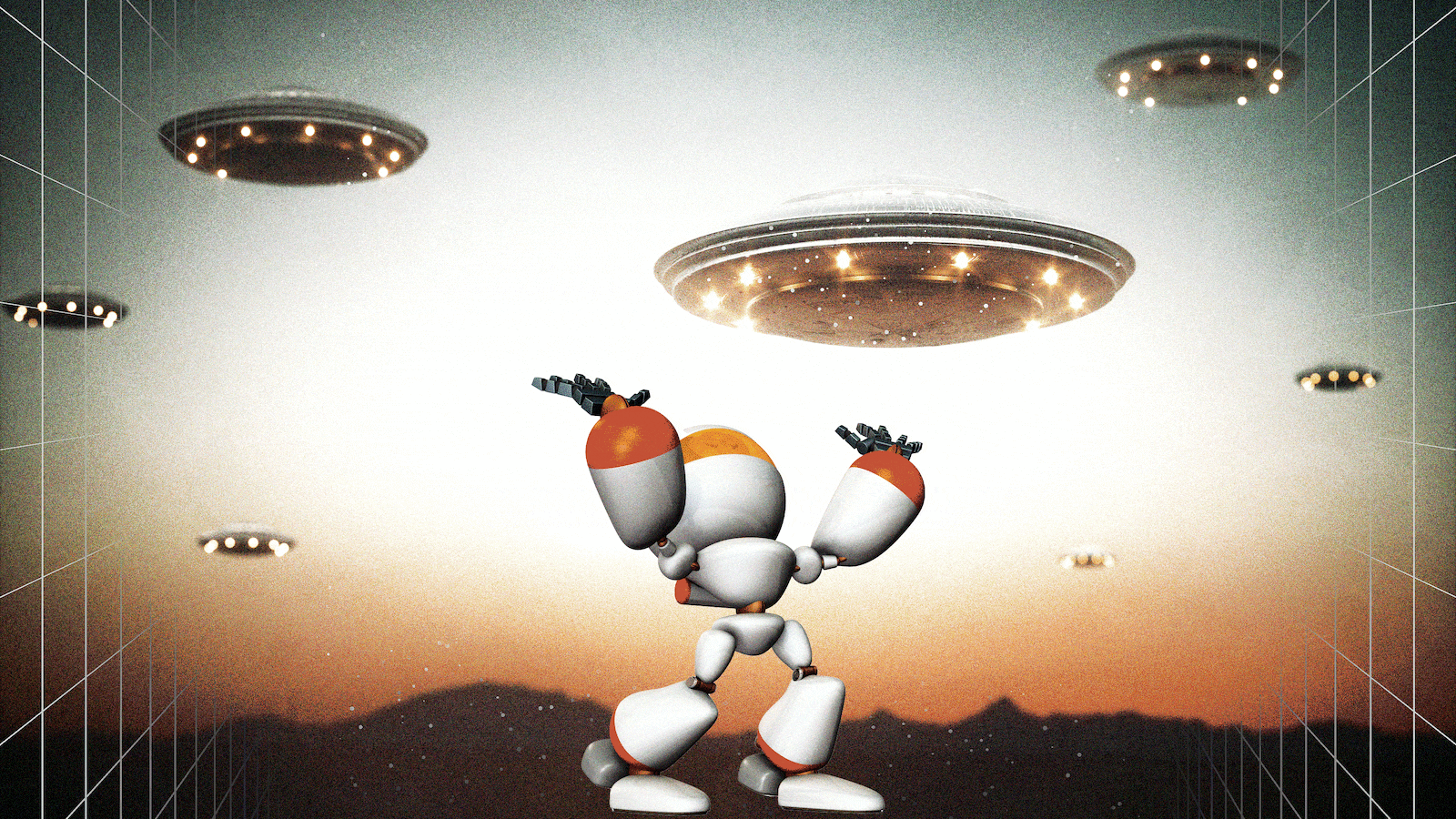Artificial intelligence isn’t just taking jobs from artists, screenwriters, journalists and office workers. It’s coming for astronomers, too—in particular, the search for extraterrestrial intelligence, or SETI.
However, as with other jobs, experts warn that we surrender that work to AI at our peril. “Nothing can compete with our insatiable human curiosity and imagination,” Ross Davis, a specialist in information and communication sciences at Indiana University, told The Daily Beast.
The threat that self-improving AI chatbots such as ChatGPT pose to screenwriters was a driving factor in the Writers Guild of America’s six-month strike, which ended last week with major concessions from Hollywood studios.
The dynamics are different in astronomy, where scientists combine high-order conceptual thinking—that is, imagination—with rigorous data-collection and analysis. The former is a fundamentally human undertaking and should remain so, scientists told The Daily Beast. The latter is already highly automated, and could become even more automated as smart algorithms proliferate across the sciences.
Many astronomers would even welcome more AI assistance. Andrew Siemion, the director of the SETI Research Center at the University of California, Berkeley, told The Daily Beast his team is trying to make more of its data—specifically from the powerful Green Bank Telescope—available to AI developers.
Anticipating the development of ever-smarter AIs, one team of SETI researchers—led by John Hoang at the Santa Cruz Institute for Particle Physics—proposed a division of labor. Algorithms can encode and decode data “at a high rate of speed,” Hoang and his coauthors noted in a study that appeared online on Aug. 26. But asking AI for nuanced analysis sometimes returns “nonsensical” results, they warned.
This is a phenomenon known as hallucination, or when models such as OpenAI’s ChatGPT make up facts. It’s a perennial issue when it comes to AI that poses a danger when it comes to the spread of misinformation.
Hoang and several of his teammates declined to comment on their study, which apparently hasn’t been peer-reviewed.
SETI typically involves astronomers pointing powerful radio receivers at a distant star and recording the resulting electromagnetic noise. The goal is to find, inside the noise, any broadcasts that might come from an alien civilization.
Radio SETI produces a ton of data. In the early decades of the fields—the 1960s and 1970s—astronomers would scan the data in the form of fat stacks of printouts, each page a chaotic numerical recreation of interstellar sounds. They’d look for outliers in the numbers—any hint that someone, somewhere may have said something in the form of a targeted radio broadcast.
It was mind-melting work requiring an equal mix of number-crunching and imagination. After all, an astronomer would need to imagine how aliens might communicate before they could listen for that communication in between the radioactive screeches and groans of millions of stars being born, growing and dying.
In one famous case in 1977, astronomer Jerry Ehman noticed, in a stack of printouts depicting recordings from Ohio State University’s powerful Big Ear radio telescope, the contours of a signal that seemed to be 30 times louder than the surrounding stellar noise.
Equally compelling, the signal traveled along a seemingly symbolic frequency: 1420 megahertz, the resonant frequency of an energized hydrogen atom. If aliens were trying to make contact with another civilization, far away, they might start by describing something as fundamental as hydrogen. Something any civilization should recognize.
“Wow!” Ehman wrote in his moment of discovery. His exclamation gave the signal its name.
For a few years, the Wow! signal was the great hope of SETI: the best chance yet to locate, and potentially communicate with, an alien civilization. But astronomers were never able to reproduce Ehman’s results. They never heard the same loud signal a second time.
Every couple decades or so, some hopeful astronomer organizes a fresh search for the Wow! signal. So far, no luck. Lately, Columbia University astronomer David Kipping has been arguing for yet another search for the signal—and this is exactly the kind of thing AI could help with by speeding up the analysis of hard drives full of radio data. “Generative AI has the potential to significantly improve the efficiency and effectiveness of the search for extraterrestrial intelligence,” Hoang’s team wrote.
But Ehman’s experience with Wow! all those decades ago isn’t an argument for an AI takeover of the search for extraterrestrial intelligence. After all, Ehman’s breakthrough wasn’t analytical, but creative. He first noticed a loud signal, and then noticed that the signal seemed to have meaning. In the signal’s mimicry of an energized hydrogen atom, Ehman sensed intention. Intelligence. Curiosity. Hope.
These are ideas, not data. Unless AI achieves true sentience, it might never have such ideas.
For that reason, there’s a limit on what a chatbot can do for astronomy in general, and SETI in particular. AI can help overworked, underfunded scientists gather and analyze data. It can’t help them dream up the questions we should try to answer in order to better understand the universe. And AI “won’t be able to step back and apply intuition to visual elements at a high conceptual level,” Davis said.
Maybe screenwriting, journalism and office work are in trouble in the coming AI revolution—but astronomy will be safe for now. When it comes to the search for life in the universe, no bot can compare to its flesh and blood counterpart quite yet. “I don’t think that there is a high risk for SETI,” Annie Robin, an astrophysics researcher at the Institut Utinam in France, told The Daily Beast.
If we turned over astronomy to the bots, we’d turn astronomy into something it’s not. We’d turn it into a lifeless, and pointless, exercise in number-crunching—instead of the search for understanding that it’s meant to be. “It all starts and ends with us,” Davis said, “with AI mainly being a means and not an end.”










